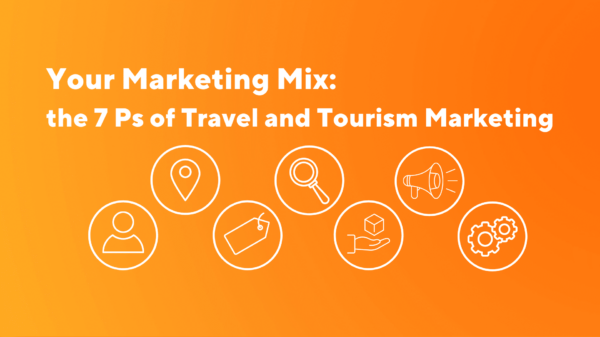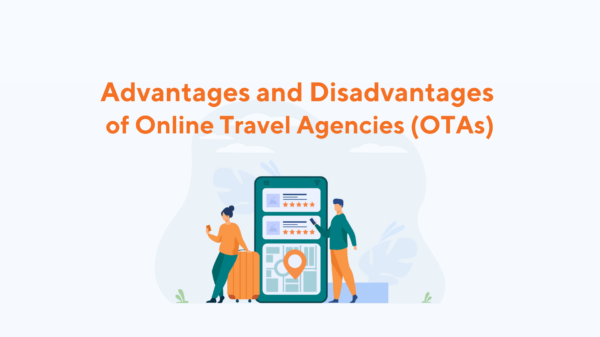It’s almost universal: Customers love photos and videos that ignite their imaginations and give them a sense of what they’ll enjoy when they book with you. But what if you could give them more? A full 360° view of the experience they’re booking, one that immerses them entirely — that’s what virtual reality promises.
Virtual reality is increasingly popular in the video game world, but its proponents are finding that it’s good for so much more than escapist entertainment. Travel marketers have been particularly quick to embrace the new generation of VR experiences because customers love them. They’re novel, which is always great, but they’re also capable of sharing much more information about a travel experience than photos or even video ever could.
And here’s the secret: VR experiences might sound out of reach for most customers, but they aren’t. Not anymore. Sure, you can spring for expensive gaming headsets like the Oculus Rift ($598 US), but anyone with a smartphone can use a cardboard VR viewer to enjoy most VR videos, and those cost as little as $5 US per unit. Travel agencies are investing in plenty of both.
VR Adoption is Booming in Travel
Thomas Cook was one of the first big adopters of VR for travel marketing. Its Try Before You Fly campaign let travelers visiting the company’s flagship stores experience a series of virtual reality holidays in Egypt, Cyprus, Greece, New York and Singapore.
According to Visualise, the VR production studio that filmed the campaign, Thomas Cook saw a great return. In its first 3 months, it generated about $15,500 in flights and hotel bookings, with a 40% return on investment.
Social media agency KRDS created this 15-second video showing how easy it is to get customers into the Thomas Cook VR Experience:
YouVisit, a company that makes virtual experiences for travel companies, told Travel Market Report that its clients’ VR experience see customer visits lasting an average of over 10 minutes, and an impressive 13 percent conversation rate.
A Norwegian School of Economics study found that consumers who viewed locations in 360-degree virtual reality believed they had more information about the quality of the experience than they would from just viewing photos, which in turn could make them feel more comfortable booking.
Customers love it, marketers love it, and travel agencies love it. Tour operators are starting to see the benefits of VR, too.
The Risks Have Been Studied
What about the risk of spoiling the experience for your customers? Well, the consensus on that is simple: the experiences you sell can’t fit in a VR headset. Just as video has proven to be a powerful marketing tool that doesn’t replace the real experience of going on a tour or taking part in an activity, a 90-second VR teaser is no substitute for the real thing.
Reality has a host of sensations that aren’t reproducible in VR. The scent in the air. The warmth of the sun. The social experience of traveling with a guide or group, or working with an instructor. The satisfaction of physical exertion. The whole of the experience, in other words, since VR can only capture a visual and auditory slice of it. Take this Quantas-commissioned exploration of Hamilton Island. It’s beautiful — but it’s definitely not the same as being there.
Still, the VR threat to tourism isn’t being ignored. It’s an issue that’s been examined from all sides since as far back as 1995, when the technology was in its infancy. So far, the general consensus is that VR simply can’t replace real-life experiences.
In a 2016 study from The Hong Kong Polytechnic University and Washington State University, researchers gave participants a 10-minute VR tour of Tokyo to see how they’d respond. They found the still imagery and lack of social interaction less engaging than a real tour. Most found the experience not unlike looking at photos in a travel guide. Some were more inclined to visit Tokyo after the study, having gotten a sample that interested them in the full experience.
One participant had a different reaction. The authors explained that “the VR experience decreased her intention to visit Tokyo because what she saw was not what she had expected to see.” Sound like a loss, but by learning more about the destination, she may have saved herself a bad time — and saved some tour companies an unhappy customer.
In all those cases, the customers came out of the VR experience more informed about their destination, and none felt they’d already seen all there was to see.
Uses Beyond Marketing
A virtual reality exploration of a tour or event can serve as a great marketing tool but consider its potential for internal use, too. Staff, sales teams, and agents don’t always work in your immediate are, and travel is costly. If it isn’t practical to bring them to your location, a VR demo tour can give them a better sense of the tours or activities you offer than a photo album.
At a Samsung VR-camera unveiling last year, Facebook Inc.’s Mark Zuckerberg stopped by to talk about the future of VR. Facebook is a major player in the VR world since their purchase of Oculus Rift, one of the most popular consumer-grade VR headsets.
“Imagine holding a group meeting or event anywhere in the world,” Zuckerberg said, according to Skift. “Right now, virtual reality is mostly used for games and entertainment, but that’s quickly evolving. One day you’ll be able to put on a headset that’ll change the way you live, work and communicate.”
Virtual reality is also taking over trade shows. At ITB Berlin 2015, Lufthansa’s trade show booth included the impossible: a full Boeing 747-8. With a virtual reality headset and controller, visitors could explore an interactive view of the plane from their business-class seats. Lufthansa also gave them a peaceful VR break on the beach — a lovely haven in the middle of a busy trade show.
Here’s a demo from 3spin, the VR firm Lufthansa worked with:
With VR, you can transport the best parts of your experience to the trade show floor, transporting stressed-out attendees for a moment of calm.
The Bottom Line
We’re still a long way out from VR entirely replacing traditional tour marketing, trade show displays or staff meetings. Businesses and marketers are adopting the technology at an accelerated rate, but consumers are more cautious.
But never before has VR been so accessible to the average person — and it’s only going to get easier and more affordable. This is a great time to look into VR while it’s still novel for most consumers, while it will still make your company stand out from the crowd.
Want to know how? Read our guide to getting started with VR.
Search The Blog
Most Popular Articles
- 16 Innovative Tourism Business Ideas and Trends for 2025
- Your Marketing Mix: the 7 Ps of Travel and Tourism Marketing
- Advantages and Disadvantages of Online Travel Agencies (OTAs)
- Grab the Attention Your Tours Need With These Easy Description Tweaks
- Liability Waivers: A Must-Have in the Travel Industry





